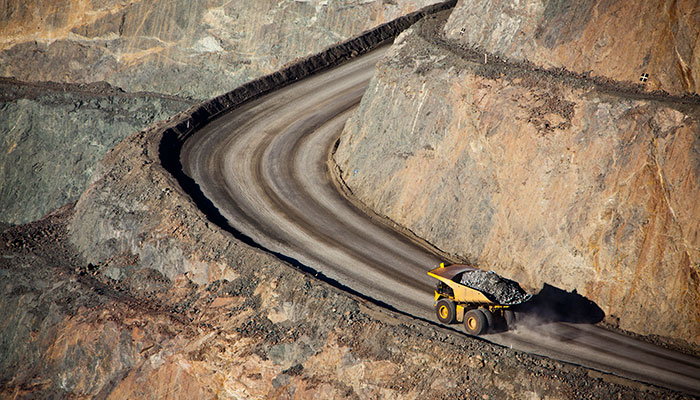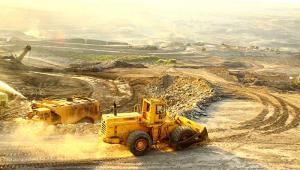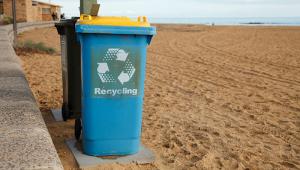Minerals are a shared inheritance, usually owned by the state as trustee for the people and especially future generations. Mining is effectively the sale of the minerals. Royalties and other proceeds from mining are received in exchange for the minerals.
Naturally the goal is to ensure that the mineral is sold for its full value, ie, the loss should be zero. Put simply, if the minerals extracted are worth 100, how much did the government receive in exchange, and what was lost?
Loss is the difference between:
(a) the in-situ value of the mineral extracted
(b) the proceeds received in exchange for the minerals.
The in-situ value of the minerals extracted is their sale value minus the costs of extraction including a normal profit for the extractor. This can be estimated from the audited financials of extractors or from the national income statistics.
The amounts received by the government in exchange for the minerals would typically be taken from the government finance statistics.
Extractive Industries Transparency Initiative (EITI) countries are now required to submit additional government finance statistics around natural resources following International Monetary Fund’s standard remplate to collect data on government revenues from natural resources.
In earlier work, the IMF has estimated ‘effective tax rates’, which imply loss rates of 15%-35% for hydrocarbons and 35-55% for minerals[1].
By contrast, using audited financial statements of the largest miner, Goa Foundation has found loss rates in Goan iron ore of 95% over an 8 year period. The absolute loss was over 20% of cumulative GDP.
Had this amount been captured, saved in an endowment fund like Norway and only the real income distributed as a citizen’s dividend like Alaska, we could have eliminated poverty in Goa. Viewed as a per head tax with the benefits going to a few super rich, it is looting economics.
Australia is a quintessential developed resource rich nation. We would expect loss rates to be insignificant. Following the IMF’s seminal October 2018 Fiscal Monitor on Public Sector Balance Sheets, we have recently found two separate reports by the Australian Bureau of Statistics from which we can calculate loss rates from selling mineral wealth.
- The table below is taken from Recording environmental assets in the national accounts (Obst & Vardon, 2014), which in turn is taken from a 2012 report by the Australian Bureau of Statistics. These studies provide estimates for Resource Rent as well as Rent payments to government for the decade 2000-2010.
Year | Resource Rent (RRent) | Rent payments to government (RentNA) | Losses | Loss Rate |
A | B | C | D=B-C | E=D/B |
2000–1 | 15.8 | 2.7 | 13.1 | 83% |
2001–2 | 16.8 | 2.7 | 14.1 | 84% |
2002–3 | 18.3 | 2.8 | 15.5 | 85% |
2003–4 | 20.2 | 2.6 | 17.6 | 87% |
2004–5 | 22.0 | 3.6 | 18.4 | 84% |
2005–6 | 25.4 | 4.8 | 20.6 | 81% |
2006–7 | 28.8 | 5.2 | 23.6 | 82% |
2007–8 | 35.2 | 5.8 | 29.4 | 84% |
2008–9 | 39.6 | 9.5 | 30.1 | 76% |
2009–10 | 44.1 | 7.7 | 36.4 | 83% |
|
|
|
|
|
Total | 266.2 | 47.4 | 218.8 | 82% |
|
|
|
|
|
% of RRent | 100% | 18% | 82% |
|
The loss rate for Australia is 82%. Put simply, for every 100 of minerals extracted, the people of Australia received only 18. This equates to between 2000-2010, an estimated AUD 218.8 billion (US$159 billion) was lost through mineral extraction in Australia.
Since the Australian population in those years was around 21 million, the loss is effectively a hidden per head tax of AUD 10,000 per man, woman and child, redistributed to the extractors. Converted into USD at current exchange rates, this is hidden tax of $7,000 per head, $28,000 for a family of 4.
- This result is corroborated by Chart 6.1 from Australia’s Future Tax System, 2009. As can be seen, resource profits before tax and royalties are also adjusted for an allowance for corporate capital, in essence measuring resource rent. Total resource tax and royalties as a share of RRent declined from 38% in 2001-02 to 18% in 2008-09. In other words, the loss rate increases from 62% to 82%.
Following this report, Australia instituted a ‘mineral resource rent tax’ to reduce the loss. However, after only two years and a change in government, this tax was withdrawn. Massive lobbying and political donations had a role.
BHP Billiton has recently settled with the Australian tax authorities on the issue of taxing profits in a marketing hub in Singapore, paying AUD 529 million. Such amounts for appropriate periods should be added to resource rent for either of the two calculations above. Ideally, loss rate calculations should begin at the final sale point (eg landed in China) to ensure that all cost and profit elements are incorporated.
The current government finance statistics treats the proceeds from mining as “revenue” or “income”. The goal of the mining ministry is usually to increase extraction and “revenue” to the budget. In this perspective, lowering royalty rates leads to additional mining translating into greater revenues. Low loss rates isn’t an objective, nor even a measure.
The politicians like calling royalties “revenue” as they do not have to raise taxes and it gives them space for clientelism. The voters like it as their taxes will not increase, and they may even benefit from some patronage.
However, the reality is that a fire sale of minerals is taking place. For every 100 of minerals extracted, 82 is lost. Increasing extraction on these terms worsens the loss.
In this scenario, it is astonishing, yet not surprising, that Australia pursues further expansion of its mining, famously the proposed Carmichael coal mine by Adani. Some of the coal is intended to pollute Goa, where we are based.
It is likely that this obvious error in accounting is not being rectified as it goes against the interests of politicians in resource rich nations. The IMF estimates around a third of its members are resource rich nations.
Most politicians all over the world argue for greater extraction. As long as the proceeds are treated as “revenue”, voters are happy. This leads directly into a tragedy of the commons, with different countries trying to extract faster than the next.
What is really happening is the theft of the commons with the consent of the commoners, without the consent of future generations. Theft by fraudulent accounting, with civilization collapse as its consequence.
Minerals are a shared inheritance, and mining is its sale.
Royalties is the consideration in exchange for the mineral wealth extracted and sold. Zero loss must be the goal, and the entire proceeds invested for future generations.
Due to an error in accounting, zero loss isn’t a goal or a measure of performance of mineral management in most countries. Large losses are hidden, driving corruption, crony capitalism and rising inequality while enabling environmental, human rights damage resulting in conflict and civil war.
Nations are merrily consuming their shared inheritance recording it as an increase in income. This is a key contributor to unsustainable, and will result in civilisation collapse if the world continues on this path.
[1] Fiscal Regimes for Extractive Industries: Design and Implementation, paragraph 63&64
This article was first published on Medium.com















